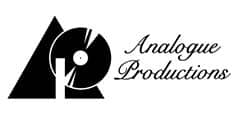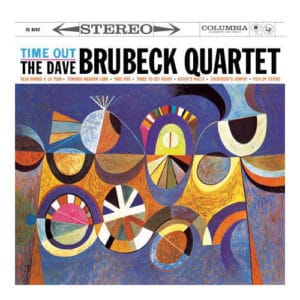Marketplace
2012 Analogue Productions PRESSING
- RPM 45
- Audio Stereo
- Catalog Number APJ 8192-45
- Release Year 2012
- Vinyl Mastering Engineer Bernie Grundman
- Pressing Weight 200g
- # of Disks 2
- Jacket Style Gatefold
- 100% Analog Mastering Yes
- Pressing Plant QRP
- 45 RPM Yes
- Stereo Yes
- Original Release Year 1961
- Original Label Columbia
- Original Catalog Number CS 3192 (stereo)
Let’s put this in perspective: As long as there have been audiophile record collectors, Dave Brubeck’s Time Out has been in demand as a collectible. Unlike truly rare early Prestige and Blue Note LPs, Take Five ranks as one of the biggest-selling jazz albums of all time—the first jazz title to sell a million copies. Akin to Miles Davis’ Kind of Blue, it was recorded in a legendary studio (Columbia’s 30thStreet Studio) by an equally legendary recording engineer (Fred Plaut). In fact, the sessions for the Brubeck and Davis LPs overlapped. Time Out was captured in July and August 1959. And although a version of “Take Five” got released as a single shortly thereafter, the album was delayed until May 1961.
Brubeck claims an equally interesting back story. He was born in 1920, started performing in the army during World War II, and continued into his 90s. The pianist studied classical music with Darius Milhaud. His first recording contract was with the then-newly formed Fantasy Records, with which he enjoyed healthy sales of his early releases, mostly in an octet setting. In 1951, Brubeck formed his quartet with Paul Desmond and became a fixture on the college campus tour circuit. He soon quit Fantasy and signed with Columbia Records and recorded Time Out. Almost 60 years on, the album’s unique time signatures may not seem as fresh or original as they once did, but their charm remains undeniable, especially the ear worm “Take Five.”
There are several good choices for listening to Time Out. In addition to the obvious (a six-eye original in stereo or mono), Analogue Productions (AP) sells 33RPM and 45RPM versions. Back in the 1990’s and 2000 Classic Records released the album in several configurations. AP’s versions are pressed by Quality Records Pressings on 200-gram vinyl where Classic Records utilized 180-gram vinyl.
AP’s 45RPM 2LP edition is 100% analog mastered by Bernie Grundman from the original tapes and sounds like it. Of all the choices, this reissue most authoritatively nails the piano and bass sound. At times with an original, you have to remind yourself the bassist is there. The piano’s left-hand part is also much better fleshed out on the AP reissue than elsewhere. And like my original white-label stereo pressing, the left-right stereo separation feels a bit artificial. If that bothers you, mono originals avoid the effect but line up the instruments front to back and create less of a spread of the best 1950s Blue Note or Prestige monos. The original (in either stereo or mono) seems to capture more air around the instruments, especially the drum kit. For those who only listen to “Take Five” (you know who you are!), the track gets a whole side on the AP 45RPM set. It’s the inside track of three on all other versions, and seems to benefit more than the other fare from the Grundman master.
Time Out


 4.5
4.5